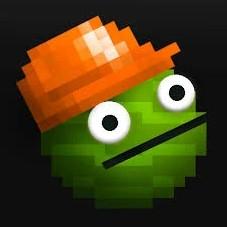Melon Playground (also known as Melon Sandbox) is not a game with a high score to beat or a final boss to defeat. It is a pure, unadulterated physics-based sandbox simulation that hands you the keys to a digital world and says, "Go on, create some chaos." My experience with it has been one of endless experimentation, unexpected chain reactions, and a whole lot of creative destruction.
The game's objective is simple: there is no objective. The core appeal is the unlimited freedom it gives you to set up your own scenarios, test realistic ragdoll physics, and observe the often-brutal consequences of your actions. It’s a perfect outlet for both the inner engineer and the inner mad scientist.
How to Play Melon Playground: Unleashing Your Creativity
The gameplay loop in Melon Playground revolves entirely around manipulating objects and observing their interactions. Here is a step-by-step guide on how to get started and master the art of chaos:
1. Getting Started: The Basic Interface
When you first open the game, you'll be on a blank map, which is your canvas. The interface is minimal, with menus typically found along the sides of the screen.
Spawn Menu (Object Library): This is your main toolkit. It's usually categorized and contains everything you need:
Characters (Livings): These are the ragdoll entities—Melons, Pumpkins, Corn, etc.—that react realistically to damage and physics.
Props: Furniture, crates, platforms, barrels, and other non-living objects for building and scene-setting.
Weapons: A diverse arsenal including knives, guns, explosives, and flamethrowers.
Vehicles: Cars, tanks, and other rideable or crashable objects.
Mechanisms: Items like levers, wires, and thrusters used to create complex contraptions.
Drag-and-Drop: You use this core mechanic to place any item from the menu onto the map.
2. Core Mechanics and Controls
Mastering a few simple controls is key to creating complex scenarios:
Movement and Placement: Drag an object to move it.
Context Menu: Double-tap on any object to bring up a menu with options like:
Resize/Rotate/Flip: Adjust its dimensions and orientation.
Freeze/Unfreeze: Lock an object in place (essential for building structures that don't immediately collapse).
Disable Gravity: Make an object float.
Interactions: To make a character hold a weapon, drag the weapon close to its hand, and an "On" button will typically appear to attach it. You can also use ropes and wires from the tools menu to connect objects and build devices.
The Pause Feature: This is your best friend. Pause the game before placing, resizing, or connecting objects. This prevents them from falling or reacting before you're ready to unleash the fun.
3. Experimentation and Tips
The true fun of Melon Playground comes from experimentation. Here are some of the most rewarding things to try:
Physics Tests: Adjust the gravity or use specialized syringes on characters to observe different biological and physical reactions.
Contraption Building: Use props and mechanisms to build a working car, a simple guillotine, or a complex chain reaction machine that culminates in a massive explosion.
Combat Scenarios: Set up two opposing teams of characters, arm them with different weapons, and unfreeze the scene to watch a chaotic battle unfold, leveraging the detailed ragdoll and damage system.
Modding: A huge part of the game's longevity is the thriving modding community. Explore user-created mods for new maps, characters, weapons, and tools to dramatically expand your options.
Save Your Creations: Once you’ve built something epic, make sure to save your scene using the "Save" button so you can return to your masterpiece later.

